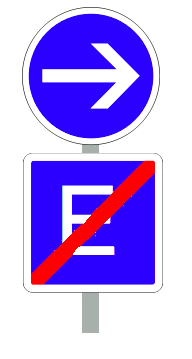 When you want to tell the world where you are, prepositions come handy: I’m in the garden; we’re on the beach. (And so it is in Danish: Jeg er i haven; vi er på stranden.) However, very often some kind of adverb can do the job as well: I’m home; we’re out. Jeg er hjemme; vi er ude.
When you want to tell the world where you are, prepositions come handy: I’m in the garden; we’re on the beach. (And so it is in Danish: Jeg er i haven; vi er på stranden.) However, very often some kind of adverb can do the job as well: I’m home; we’re out. Jeg er hjemme; vi er ude.
You’ll notice that a lot of these locational adverbs end in -e in Danish. In addition to hjemme [YEMMeh] and ude [OOtheh], you’ve got:
– inde (in, inside), as in Hun sidder inde i stuen (she’s sitting in the living-room)
– oppe (up), as in Vi var oppe hele natten (We stayed up all night)
– nede (down), as in Kartoflerne er nede i jorden (The potatoes are down in the earth)
– henne (”at a distance”), as in Han sover henne hos naboen (He sleeps [over there] at the neighbour’s place)
– omme (”at a closer distance”), as in Den ligger omme bag huset (It lies [right there] behind the house)
– fremme (in front), as in Ølflaskerne står altid fremme (the beer bottles are always on display [”in front”])
But what if you wanted to say you were going home rather than being home? In Danish there’s a really nice trick you can use to tweak the meaning of the above words into something more directional: You just remove the final -e:
– Gå hjem! (Go home!)
– Kom ud! (Come out(side)!)
– Hun går ind i stuen (She’s going into the living-room)
– Han står op (He gets up)
– De sætter sig ned (They sit down)
– Vi tager hen til naboen (We’re going to the neighbour’s place [in that direction])
– De kom om bag huset (They came to the back of the house)
– Kom frem! (Come forth!)
Neat, huh? 🙂





